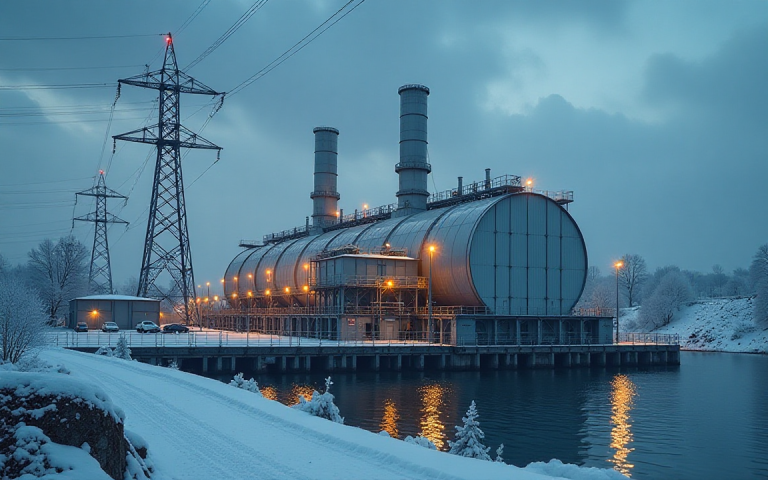Asia, a continent heavily reliant on coal for its power mix, is facing a formidable challenge in achieving net-zero emissions.
With 54% of the region’s electricity generated from coal last year, a significant shift is needed, according to Rystad Energy’s latest update.
In a proactive move to reduce emissions, several Asian nations are increasingly exploring ammonia for power generation, primarily through co-firing – blending low-carbon ammonia with traditional fossil fuels like coal or natural gas.
Rystad Energy identifies China, Indonesia, Japan, and South Korea as the burgeoning hubs for this transformative energy transition.
However, a substantial supply gap of approximately 8.8 million tonnes per annum (Mtpa) of ammonia needs to be bridged to meet ambitious 2030 targets.
Overcoming hurdles: policy, infrastructure, and cost
Despite decades of coal dependence, Asia currently lacks the robust policy frameworks and market demand essential to attract sufficient investment in ammonia infrastructure.
Countries like Japan and South Korea, facing resource constraints such as limited natural gas or insufficient renewable capacity, struggle with domestic clean ammonia production.
To reach their net-zero goals, these nations will need to import clean ammonia, which will be crucial for replacing coal as a baseload power source while simultaneously ensuring energy security and affordability, Rystad said.
The initial cost of ammonia co-firing presents a considerable hurdle, primarily due to the high expenses associated with producing low-carbon hydrogen, and the subsequent conversion and transportation of ammonia.
Rystad Energy estimates that with a low-carbon hydrogen price of $5 per kilogram (equating to an ammonia price of $1,000 per tonne), the levelised cost of electricity for a 10% ammonia blend would be roughly 50% higher than coal-only generation.
This disparity underscores the urgent need for cost reduction through “innovation, economies of scale, or the implementation of a meaningful carbon price to make ammonia co-firing competitive.”
The critical role of partnerships
Minh Khoi Le, Head of Hydrogen Research at Rystad Energy, emphasises the vital role of international collaboration in the update:
While hydrogen and ammonia are set to play a growing role in decarbonizing Asia’s power sector, much of the progress hinges on foreign partnerships and long-term offtake agreements.”
Le also highlighted the projected growth in demand, stating, “Even with high costs associated with hydrogen, our data shows that ammonia demand from power generation is expected to grow ninefold by 2030.”
However, he cautions that this growth could be jeopardised “without firm offtake commitments and accelerated development of critical import infrastructure.”
Le urged:
While several key Asian players are already in discussions with international partners to secure ammonia supply, progress on import terminals and co-firing capabilities must speed up.
China’s decisive leap
While Japan and Indonesia were early explorers of ammonia co-firing, China has adopted a more decisive and integrated approach.
Its National Development and Reform Commission (NDRC) 2024-2027 Action Plan now formally embeds ammonia co-firing as a decarbonisation strategy, moving directly to national targets before extensive feasibility trials.
Beginning in 2027, upgraded or newly commissioned coal plants in China must achieve a 50% reduction in emissions compared to 2023 levels.
The plan involves a 10% co-firing of biomass and green ammonia alongside carbon capture, utilization, and storage (CCUS) technologies.
If successful, ammonia co-firing could be instrumental in helping China meet its goals of peaking emissions by 2030 and achieving carbon neutrality by 2060.
However, the exact number of plants that will adopt this technology remains uncertain.
Given the sheer scale of China’s coal power generation fleet, the widespread rollout of ammonia co-firing is likely to extend beyond the targeted two years, particularly as existing coal power plants will require retrofitting.
China possesses a significant advantage due to its abundant renewable resources in Inner Mongolia, which position it well for large-scale production of low-carbon hydrogen and ammonia.
This year, Envision Energy commissioned the world’s largest green ammonia plant in Chifeng, Inner Mongolia, with an initial capacity of 0.32 Mtpa, slated to expand to 1.5 Mtpa by 2028.
As deal-making intensifies, China could strengthen its position as a reliable ammonia supplier for the region and potentially pave the way for exports, although the precise volumes are yet to be determined.
South Korea and Japan: pushing forward
South Korea is actively pursuing hydrogen-for-power, with its Ministry of Trade, Industry and Energy (MOTIE) launching its second clean hydrogen power generation auction.
Winning bidders in this auction, to be announced later this year, are obligated to commence generating power using hydrogen or its derivatives, such as ammonia, by 2029 under a 15-year contract covering 3 terawatt-hours (TWh) of electricity. This volume will necessitate approximately 200,000 tonnes of low-carbon hydrogen annually.
To incentivise greater participation in this year’s auction, MOTIE is introducing new mechanisms: an exchange rate-linked settlement system and a hydrogen volume borrowing system, offering increased flexibility for generators.
Japan, an early proponent of ammonia co-firing, has also made significant strides in 2025.
The nation has secured crucial contracts and attracted foreign investment to ensure a stable supply of low-carbon ammonia.
Japan plans to source blue ammonia from the US and green ammonia from China and India to address domestic supply shortages and scale up its efforts.
Early next year, Japan will announce the winners of its contract for difference program, which is expected to further bolster its ammonia-for-power ambitions and assist the country in meeting its emissions targets.
The post Asia’s clean power play: the ammonia revolution appeared first on Invezz

